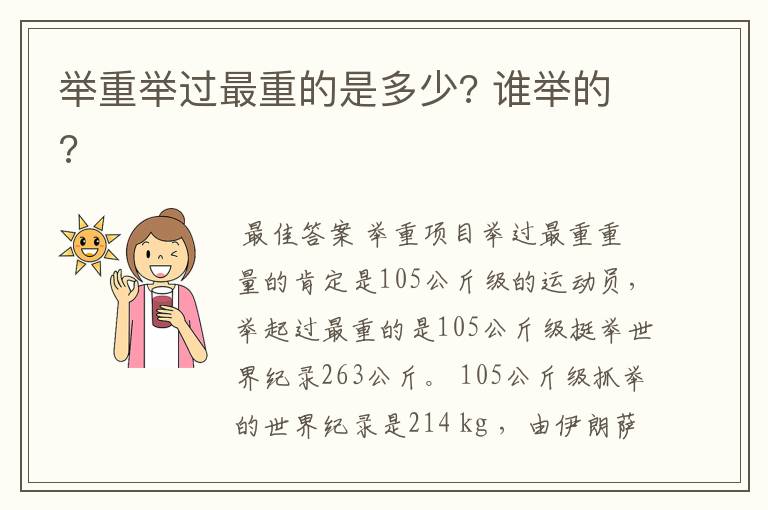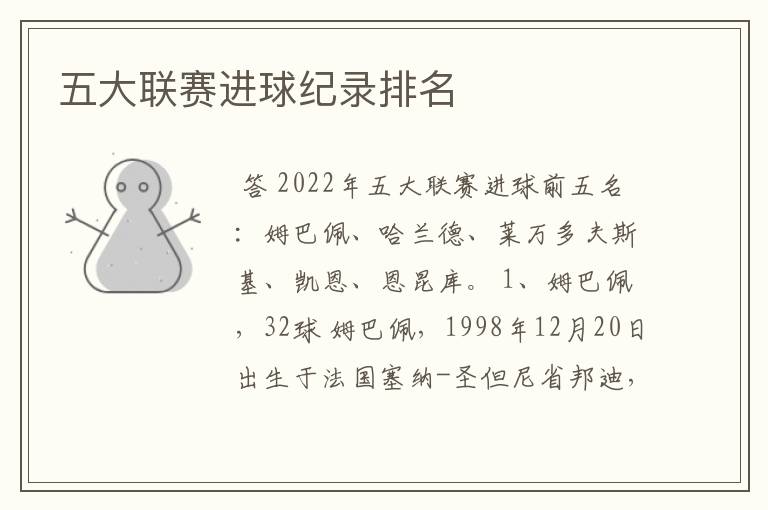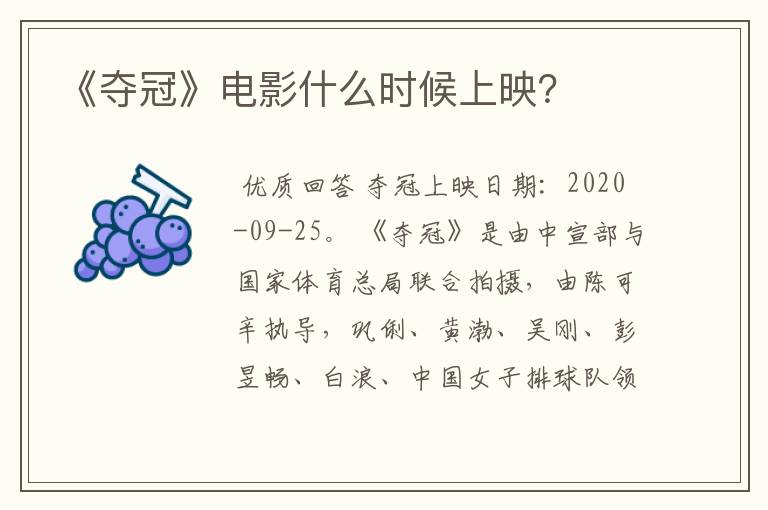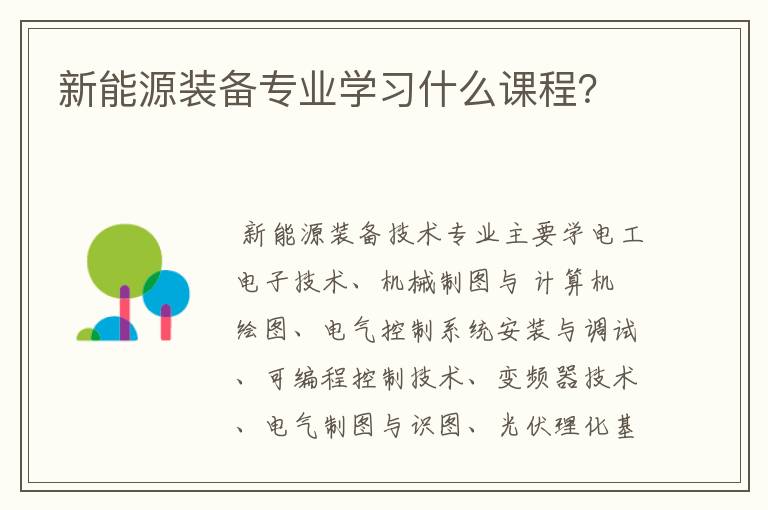华西甲状腺出院证明图
今天运困体育就给我们广大朋友来聊聊华西甲状腺病历图片,希望能帮助到您找到想要的答案。
求好心人帮忙把一份病历单翻译成英文。
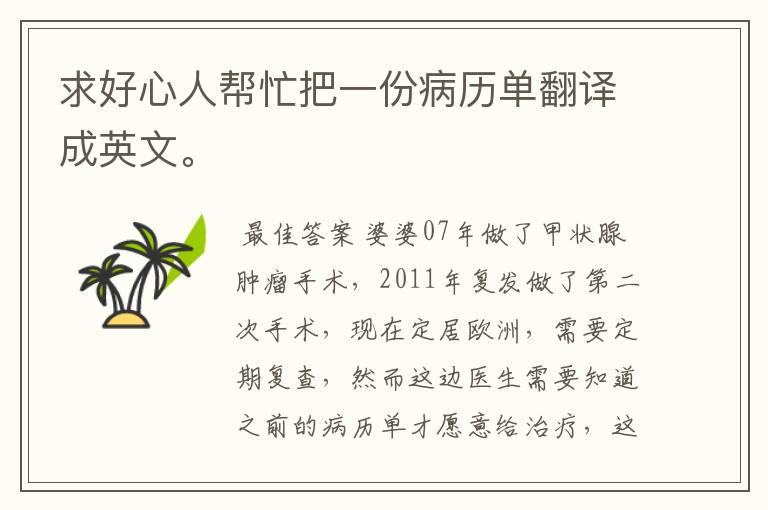
最佳答案婆婆07年做了甲状腺肿瘤手术,2011年复发做了第二次手术,现在定居欧洲,需要定期复查,然而这边医生需要知道之前的病历单才愿意给治疗,这边找了多家翻译公司都不肯翻译,怕翻译错误耽误治疗,而我又不敢相信翻译软件,故来此求助好心人,情况真的很紧急,拜托大家了,万分感谢。下面是病历单原文,再次感谢。
入院诊断:1.左甲状腺残叶肿物 2.左侧甲状腺癌术后 3.双侧结节性甲状腺肿术后 出院诊断:1.左侧甲状腺残叶乳头状癌 2.左侧甲状腺癌术后 3.双侧结节性甲状腺肿术后 4.重度缺铁性贫血 5.电解质紊乱:低钾,低钙血症 6.高血压病 7.左肾囊肿 8.甲状旁腺功能减退症 9.乙型肝炎病毒携带者 入院情况:患者何平,女,43岁,以“双侧甲状腺术后四年”为主述诉入院。查体:神志清楚,颈软,颈静脉无怒张,气管居中,左侧甲状腺可触及肿物,大小分别为1.5cm*0.5cm、2.5cm*1.5cm,形状不规则,肿物偏硬,呈实性感,表面光滑,境界欠清,可随吞咽动作上下移动,无压痛,无震颤,未及血管杂音,右侧未扪及明显肿物。4、辅助检查:甲状腺彩超(福清市医院2011.02.21)示:双侧甲状腺术后,左侧颈部上段低回声团块。 诊疗经过:入院后完善相关辅助检查,排除手术禁忌症,于2011.03.07在全麻下行“左侧甲状腺残叶切除 左侧淋巴结改良性清扫 左侧喉返神经探查术”。术后予抗炎、止血、补液等治疗、患者恢复良好,引流管已拔除,手术切口愈合佳,无渗血、渗液,未拆线。术后病理示:(左侧甲状腺残叶及第VI组LN)乳头状癌,侵及甲状腺被膜、周围纤维脂肪组织及临近的4枚淋巴结。另查见淋巴结(1/1)查见转移癌。淋巴结:左颈III区LN(0/13),左颈IV区LN(0/1),左颈II a区LN(0/2),左颈V区LN(0/3),左颈II b区LN(0/3)未见癌转移。另于(左颈II bLN)查见甲状腺组织,灶区细胞密集,生长活跃,灶区呈乳头状增生。患者术后血压波动于140-160/90-100mmHg,行肾上腺CT示:左肾囊肿;双侧肾上腺CT平扫 增强未见明显异常。醛固酮卧立位测验结果未见异常。8AM皮质醇679.8nmol/L,4PM皮质醇554.3nmol/L,去甲肾上腺素402pg/ml,肾上腺素128pg/ml。 出院情况:目前患者一般情况好,血压仍波动于140-160/90-100mmHg之间,余无特殊不适。今要求出院,请示上级予以办理。 出院嘱咐:继续治疗:出院带药:优乐甲100ug Qd*7天;复可托2支 qd*7;罗盖全0.5ugbid*7天;钙尔奇D600 0.6gbid*7;氯化钾缓释片 1gtid*7。2.注意事项:注意血钾、血钙情况,定期复查,建议往心血管内科治疗高血压。 3.门诊随访:定期复查甲状腺功能及甲状腺彩超
Her mother had a thyroid tumor surgery in 2007 and had a second operation in 2011. She now resides in Europe and needs regular review. However, doctors need to know the previous medical records before they are willing to give treatment. Here I have found several translation companies. I am not willing to translate. I am afraid that the translation mistakenly delays treatment and I cannot believe in translation software. Therefore, I would like to ask good-hearted people for help. The situation is really urgent. Please, thank you very much. The following is the original text of the medical record, thanks again.
Admission diagnosis: 1. Left thyroid remnant leaf tumor 2. Left thyroid cancer 3. Postoperative diagnosis of bilateral nodular goiter: 1. Left thyroid residual leaf papillary carcinoma 2. Left thyroid cancer 3. Postoperative 3. Bilateral nodular goiter postoperative 4. Severe iron deficiency anemia 5. Electrolyte disturbance: hypokalemia, hypocalcemia 6. Hypertension 7. Left renal cyst 8. Hypoparathyroidism 9 Hepatitis B virus carriers admitted to the hospital: He Ping, female, 43 years old, was admitted to the hospital on the basis of "four years after bilateral thyroidectomy." Physical examination: conscious, soft neck, no angulation of the jugular vein, central trachea, left thyroid palpable mass, size 1.5cm*0.5cm, 2.5cm*1.5cm, irregular shape, hard mass, Really sexy, smooth surface, less clear boundary, can move up and down with swallowing movements, no tenderness, no tremor, no vascular murmur, the right side of the palpable mass. 4, auxiliary examination: thyroid color Doppler ultrasound (Fuqing Hospital 2011.02.21) showed: after bilateral thyroid surgery, the left upper cervical hypoechoic mass. After the diagnosis and treatment: After admission, improve the relevant auxiliary examination, remove surgical contraindications, in 2011.03.07 under general anesthesia, "Left left thyroid resection of the left side of lymph nodes modified sweep left recurrent laryngeal nerve exploration." Postoperative anti-inflammatory, hemostasis, rehydration and other treatment, the patient recovered well, the drainage tube has been removed, the surgical incision healed well, no bleeding, exudation, no stitches. Postoperative pathology showed (pig left thyroid and VI group LN) papillary carcinoma, invasion of the thyroid capsule, surrounding fibrous adipose tissue, and adjacent four lymph nodes. Also check the lymph nodes (1/1) to find metastatic cancer. Lymph nodes: LN(0/13) in the left neck III area, LN(0/1) in the left neck IV area, LN(0/2) in the left neck IIa area, LN(0/3) in the left neck V area, left neck II There was no cancer metastasis in LN (0/3) in b area. Another thyroid tissue (left neck II bLN) was found. The tumor area was dense, with active growth and papillary hyperplasia. Postoperative blood pressure fluctuates in the range of 140-160/90-100 mmHg. Adrenal CT indicates: left renal cyst; no obvious abnormalities were found in plain CT scans of bilateral adrenal glands. No abnormality was found in the aldosterone standing position test. 8AM cortisol 679.8nmol/L, 4PM cortisol 554.3nmol/L, norepinephrine 402pg/ml, epinephrine 128pg/ml. Discharge: At present, the patient is generally in good condition, and the blood pressure still fluctuates between 140-160/90-100 mmHg. There is no special discomfort. This time it is required to leave the hospital and ask the superior to handle it. Hospital discharge: continue treatment: discharged with medicine: excellent music A 100ug Qd * 7 days; complex can care 2 qd * 7; Luoge full 0.5ugbid * 7 days; Calci D600 0.6gbid * 7; potassium chloride slow Release tablets 1gtid * 7. 2. Note: attention to potassium, calcium, regular review, it is recommended to cardiovascular treatment of hypertension. 3. Outpatient follow-up: regular review of thyroid function and thyroid color ultrasonography
甲状腺癌医院该不该开重大疾病证明?
最佳答案医院确诊甲状腺癌,应该(可以)开具“甲状腺癌证明”。
1、一般类似证明都是患者(家属)要求,医生(医院)才开具的,没有特别要求下是不会开具的。
2、重大疾病证明。任何医院都开具不了。因为什么是“重大疾病”?我国法律上没有明确死硬划分。所谓“重大疾病”,都是对应单位、机构……根据自己的认为各自划分,没有统一的标准。
3、所以医院仅能开具对应所患的疾病证明。自己拿疾病证明到各个办事单位,核对办事单位的“重大疾病”范围是否包含。
今天的内容先分享到这里了,读完本文《华西甲状腺出院证明图》之后,是否是您想找的答案呢?想要了解更多,敬请关注www.zuqiumeng.cn,您的关注是给小编最大的鼓励。
本文来自网络,不代表本站立场,转载请注明出处:https://www.zuqiumeng.cn/wenda/516707.html
